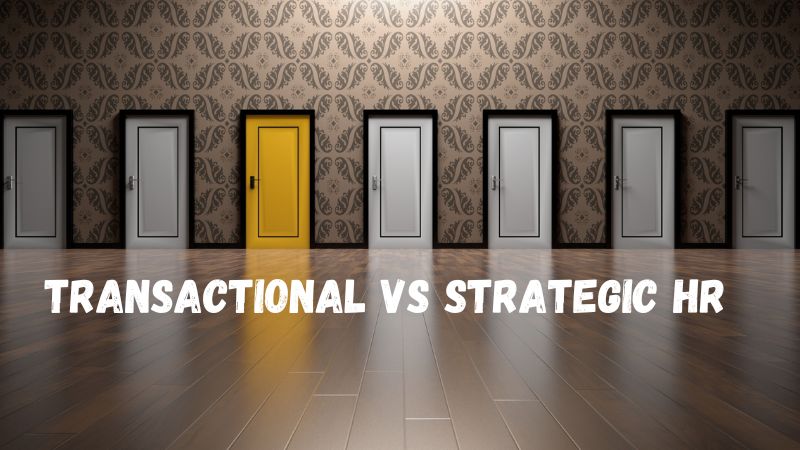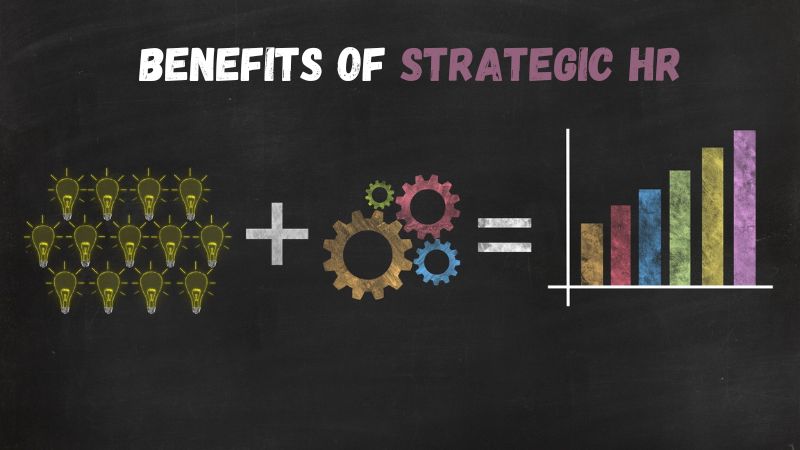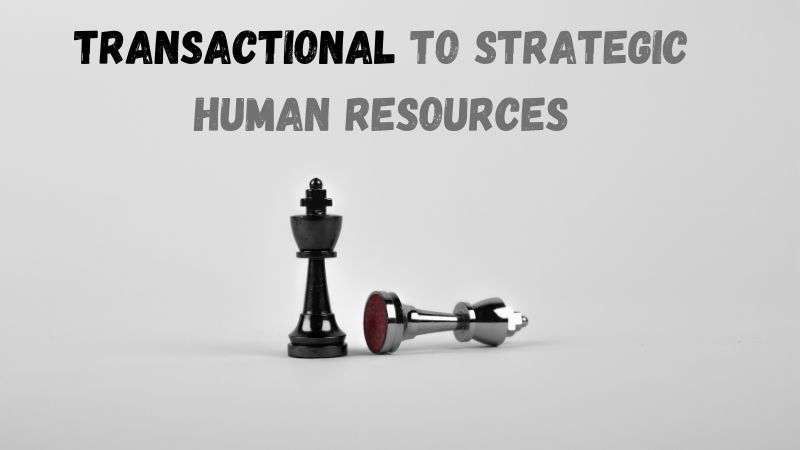Human Resources’ (HR) function has changed dramatically as a result of the dynamic corporate environment. The rising value of human capital in today’s competitive corporate environment necessitates a change from transactional to strategic human resources. The essay will discuss the key distinctions between transactional and strategic HR, as well as the advantages of switching to the latter and the best practices for implementing a strategic HR plan.
Transactional HR vs. Strategic HR: Understanding the Difference

Human resource management in its classic form is known as transactional HR. Payroll, regulations, and personnel records management are just some of the day-to-day operational and administrative activities highlighted. Although these activities are crucial, they are more reactive than proactive and do not directly advance the company’s long-term objectives.
However, strategic human resources management (strategic HRM) takes a more proactive tack by coordinating HR procedures with the company’s long-term objectives. Human resource management is the process of formulating, designing, and enacting HR programs that advance the organization’s stated goals. Human resource management (HRM) that takes strategic advantage of its employees is called strategic HRM. Human resource (HR) strategy development, corporate strategy integration, and strategic planning all play a part.
The Need for a Shift: From Transactional to Strategic HR

The realization that people are an organization’s most important asset is driving the transition from transactional to strategic human resource management. In today’s competitive business world, companies must be quick to adapt, constantly innovating, and focused on their customers. Human resources are the primary factor in shaping these characteristics. HR must, therefore, expand its responsibilities beyond those of an administrative nature in order to help shape the future of the company.
Strategic human resource management entails formulating a plan for the use of an organization’s human resources in a manner that advances those aims. Taking on a strategic role in human resource management requires formulating an HR strategy, adopting a strategic approach to HR management, and putting that strategy into action. Creating a talent management plan that guarantees the appropriate people with the right talents are in the right roles at the right time is just one example of how HR can contribute to business strategy.
The Benefits of Strategic HR

There are several upsides to HR strategies. To start, it ensures that human resources is helping the company reach its objectives by coordinating HR policies and procedures with the overall business plan. Second, it allows the company to adapt to shifting conditions in the market, the workforce, and other aspects of the business environment. Finally, it improves the company’s capacity to gain a competitive edge by attracting, retaining, and developing people. Organizational performance may be boosted through increased employee engagement, productivity, and creativity thanks to strategic HRM.
Developing and Implementing a Strategic HR Plan
There are a number of actions that must be taken in order to bring a strategic HR plan to fruition.
The first step for human resources is to learn the company’s long-term objectives. This necessitates communicating with upper management and learning the company’s long-term goals and values.
Second, HR should do a SWOT analysis to evaluate the advantages, disadvantages, opportunities, and threats to the company’s human resource.
Thirdly, HR should create a strategic HR strategy that details the HR efforts that will help the company achieve its strategic objectives. Talent management, workforce planning, employee development, remuneration and benefits, and positive employee relations should all be addressed in this blueprint.
And last, HR must put the strategy into action, keep tabs on its development, and make any required adjustments in light of feedback and shifts in the business climate.
The increasing value of human capital in today’s economy has led to a need for human resources departments to evolve from a transactional to a strategic focus. Human resources (HR) may help businesses succeed and improve their performance by coordinating HR policies and procedures with overall company objectives. How do you feel about this change? How is strategic human resources being implemented at your company?
Visit the Create More Customers Agency if you need assistance with this or any other branding, selling, pitching, or closing projects.
The Role of HR as a Strategic Partner
There will be a corresponding shift in HR’s function inside the company as the function evolves from transactional to strategic HR. Human resources used to be considered as more of a backend service that handled administrative duties and dealt with problems when they arose. However, a strategic HRM approach recognizes HR’s value and importance in creating and driving the organization’s strategy and in putting that plan into action.
Human resources (HR) plays a key role in the organization’s strategic planning and decision-making processes. Human resources should not only carry out but also contribute to the plan. This entails learning about the company, its industry, and its long-term objectives so that HR policies and procedures may be designed to help the company achieve success.
Human resources, for instance, can devise a talent acquisition strategy to recruit and retain the talents and competences needed for the organization’s planned development into new markets. Alternatively, if the company’s goal is to innovate and create new goods, HR may come up with a training and development plan to encourage a creative atmosphere.
Strategic Questions to Ask HR Leaders
Leaders in human resources need to start asking themselves strategic questions to make the shift from transactional to strategic HR. With the answers to these questions in mind, HR managers may better match their policies and procedures with the organization’s long-term objectives. Questions of this strategic nature include the following:
- What are the organization’s long-term objectives, and how can human resources help to achieve them?
- How can HR best assist the company in responding to the most pressing threats and opportunities?
- How can human resources assist develop the most important talents and abilities for achieving the organization’s strategic goals?
- What role can HR play in fostering a company culture that actively works to advance strategic objectives?
- How can HR prove that it helps the company achieve its long-term objectives?
By pondering these issues, HR managers may cultivate a more strategic outlook and guarantee that HR policies and procedures support the company’s long-term objectives.
The Benefits of Strategic Human Resource Management
There are a number of upsides to practicing strategic HRM. The first thing it does is make sure that HR is helping the company reach its long-term objectives by adjusting HR policies and procedures accordingly. Second, it allows the company to adapt to shifting conditions in the market, the workforce, and other aspects of the business environment. Third, it improves the company’s people acquisition, retention, and development capabilities, all of which are essential to maintaining a competitive edge. Finally, strategic HRM may boost business results by encouraging greater participation, output, and creativity from staff.
In conclusion, the rising value of human capital in the modern business world necessitates a move from transactional to strategic human resources practices. Human resources (HR) may help businesses succeed and improve their performance by coordinating HR policies and procedures with overall company objectives.
If you need assistance with this or any other branding, marketing, selling, pitching, or closing tasks, the Create More Customers Agency is the place to go.

